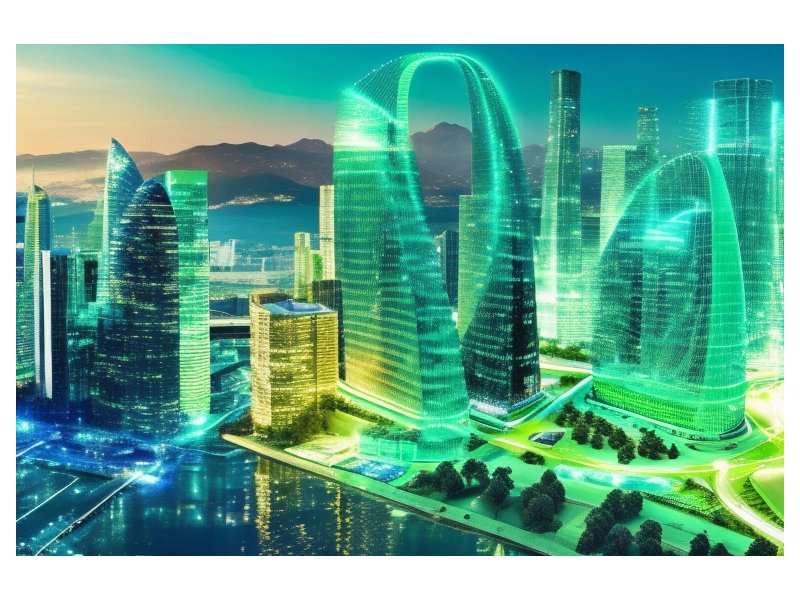
Introduction
As our world becomes increasingly connected, the Internet of Things (IoT) has emerged as a powerful force driving innovation across various industries. One area where the IoT has shown immense potential is in the creation of smart, energy-efficient cities. By leveraging IoT technologies and incorporating green practices, cities can tackle environmental challenges while improving the quality of life for their residents. In this blog post, we will explore the intersection of IoT and green technology and discuss how they are transforming urban landscapes.
1. Defining IoT and Green Technology
Let's start by defining the two key components of our discussion:
a. Internet of Things (IoT): The IoT refers to the network of interconnected devices embedded with sensors, software, and connectivity, enabling them to collect and exchange data. These devices can range from smart home appliances to traffic management systems and public infrastructure.
b. Green Technology: Green technology, also known as clean technology, refers to the use of innovative solutions that have a minimal impact on the environment. It includes renewable energy sources, energy-efficient systems, waste management, and sustainable practices.
2. The Role of IoT in Smart Cities
IoT technologies play a vital role in the development of smart cities. By integrating sensors and connectivity, cities can collect real-time data on various aspects such as energy consumption, air quality, waste management, and transportation. This data serves as the foundation for implementing intelligent systems and making informed decisions to optimize resource usage and improve sustainability.
a. Energy Management: IoT enables cities to monitor and manage energy consumption in real-time. Smart grids can detect power usage patterns, allowing for better load balancing, reducing energy waste, and enabling efficient distribution. Additionally, connected smart meters empower residents and businesses to monitor and control their energy usage, promoting energy conservation.
b. Smart Buildings: With IoT sensors, buildings can become more energy-efficient. Automated systems can adjust lighting, heating, and cooling based on occupancy and external conditions, reducing unnecessary energy consumption. Furthermore, predictive maintenance through IoT enables proactive repairs, optimizing energy usage and prolonging the lifespan of equipment.
c. Intelligent Transportation: IoT-enabled sensors and connected vehicles can transform transportation systems in cities. Real-time traffic data allows for dynamic routing and congestion management, reducing travel time and emissions. Smart parking systems can guide drivers to available parking spaces, minimizing unnecessary circling and reducing congestion.
3. Green Technology Initiatives in Smart Cities
a. Renewable Energy Integration: Smart cities are embracing renewable energy sources such as solar and wind power. IoT facilitates the integration of these energy sources into the existing grid, monitoring their generation and distribution. Smart grids can intelligently balance energy supply and demand, ensuring efficient utilization and minimizing reliance on fossil fuels.
b. Waste Management: IoT sensors can revolutionize waste management practices. Smart trash bins equipped with fill-level sensors optimize waste collection routes, reducing fuel consumption and carbon emissions. Additionally, IoT-powered recycling programs can track and incentivize proper waste sorting, promoting a circular economy.
c. Environmental Monitoring: IoT devices enable real-time environmental monitoring, allowing cities to track air quality, water quality, and noise levels. This data can drive targeted interventions to address pollution hotspots and improve public health. For instance, smart irrigation systems can optimize water usage in parks and gardens based on weather conditions and soil moisture levels.
4. Benefits and Challenges of IoT and Green Technology in Cities
a. Benefits:
- Reduced energy consumption and carbon emissions
- Enhanced resource management and cost savings
- Improved quality of life for residents
- Enhanced public health and environmental sustainability
b. Challenges:
- Data security and privacy concerns
- Complex integration and interoperability of IoT devices
- High implementation costs and infrastructure requirements
- Ensuring equitable access and bridging the digital divide
Conclusion
The convergence of the Internet of Things (IoT) and green technology is revolutionizing the way cities are designed and operated. By leveraging IoT devices and connectivity, cities can become smarter and more energy-efficient, promoting sustainable development. However, challenges like data security and high implementation costs need to be addressed to fully realize the potential of IoT and green technology. By embracing these technologies and implementing forward-thinking policies, we can create smart, energy-efficient cities that prioritize the well-being of both the environment and their residents.
Share This News